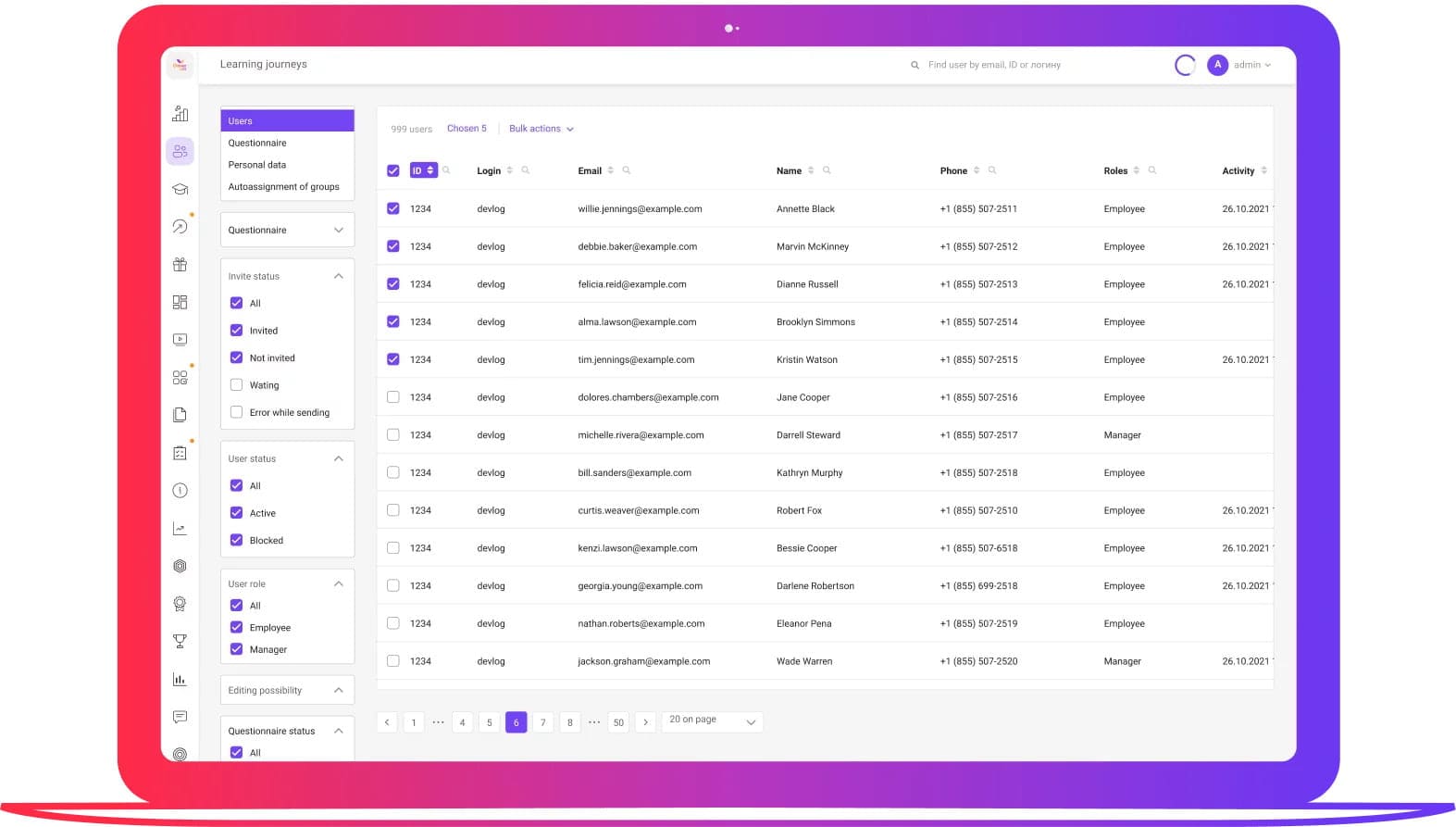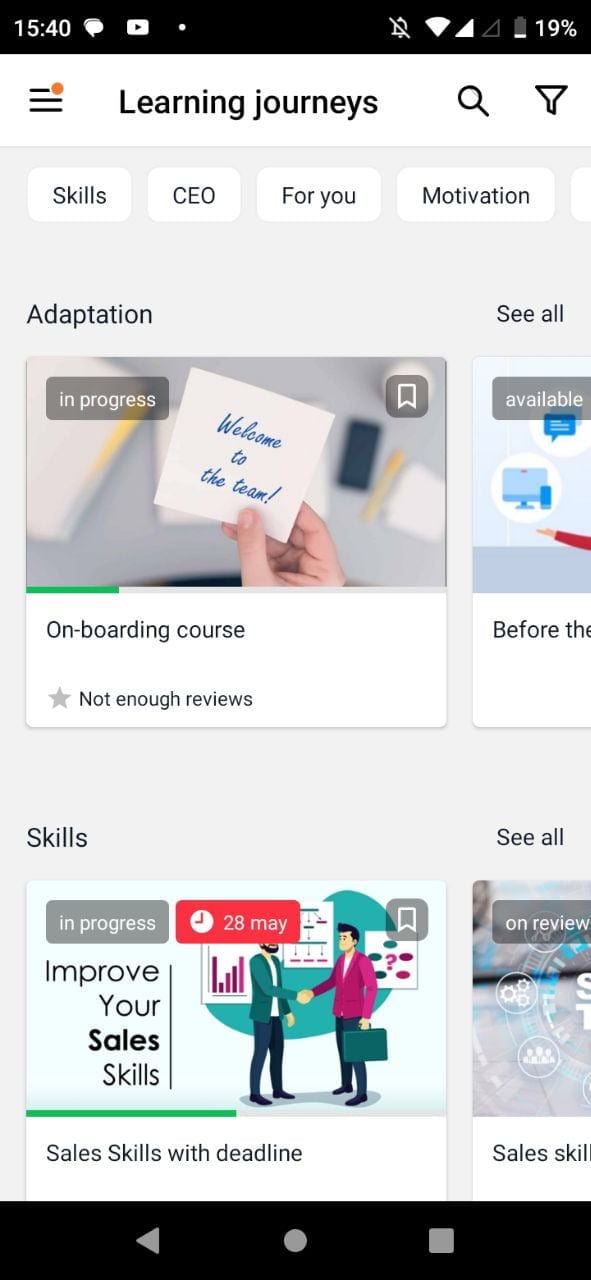This process starts after the company accepts someone in their team. Each company creates two-sided ties with its employees: they work for the company while obtaining some profit from it, too. It has its own workflows, directed at value creation and money earning, and each employee works at some point in these workflows. Onboarding, thus, is the alignment of employees with the company’s workflow, putting them into these points and allocating them tasks that they should complete. Management software, such as CleverLMS, saves employees’ data, enables information exchange and task allocation, and provides work analytics, greatly improving its efficiency.
We’ll define and analyze this process, and after that, see how you can use employee onboarding software, usually learning management systems (LMSs) to automatize it. Before that, however, let’s define the onboarding.
Making newcomers familiar
Even if the company managed to find a first-class expert in the field, they still should adapt to the company. As mentioned, each company has its unique workflows and tasks aimed at value generation. One can say safely that there aren’t two companies whose workflows are exactly the same. Therefore, workers need to become familiar with the company’s culture, mission, tasks, and value-creation methods. The onboarding process is what enables the company’s management to do this.
A company should have a good plan for employee onboarding that will ensure that all newcomers will soon become “citizens” of the company, working for its benefits and obtaining their benefits, too. Without such a plan, a company risks decreasing its efficiency greatly, as no one will know exactly what they needs to do. Even strong employees will fail to implement their skills and move your workflow. Thus, no value will be created. That’s why we need a strong onboarding plan.
Before analyzing it, let’s proceed to a clear definition.
Definition
The onboarding definition is easy: adapt new people in your company to work with you. It’s an alignment. You have a company as a set of workflows; employees have skills that may be implemented into these workflows. The result is value creation and salary payments, and everyone is happy. To reach such an idyllic picture, the alignment should be done well.
So, the onboarding process’s meaning is to make it successful.
Planning the process: Best practices
How to create a strong onboarding plan that will ensure that your new workers will adapt to the company as soon as possible, starting to work and develop themselves and your company? That’s the question we should answer here.
Let’s see which stages are involved in the process and which practices are desirable here.
- Hiring is the first stage, right after all terms are agreed and the company accepts the employee to work. It requires filling out various legal documents regarding working conditions and taxes, as well as introducing the new employee to work practices and making sure they understand these practices. It’s important to start early here: Do you have a prepared plan for employee orientation, including all legal matters? If not, think about creating it.
- Work allocation is when your workflows are clearly divided into tasks, each with clear deadlines, and you assign them to employees to complete and create some value. A personal approach is crucial here: understand, what each employee wants, and how they see the world, and build relationships with them based on it. Also, set clear expectations on what the end result would be, as it’ll greatly increase the chance of success and decrease possible misunderstandings.
- Work monitoring is analyzing tasks’ results to understand how well they were performed. It includes metrics such as completion time, and it’s important to use them to evaluate the success quantitatively.
- Training is dedicated to improving the worker’s skills, and it’s especially important today, with quick technological progress and constant world improvement. It includes course creation and involvement of the company’s personnel in education, intertwining it with work, and rewarding those with the best performance.
Therefore, a good onboarding program focuses on treating all newcomers personally to establish a good connection with them while measuring their work results using various metrics. On the one side, good relationships are crucial to stable and efficient work communication. On the other side, various metrics and statistics enable measuring the work quality objectively. By combining them, the management will obtain the best results.
That’s where onboarding software will help.
Using software
While the personal approach is very good here, this process is similar for all organizations and has a specific structure which you’ve seen above. Various software can help automatize it, ensuring that everything will be done. It frees a lot of time for managers who can focus on communications with newcomers, creating educational materials, and monitoring their work results using concise statistics. For example, you can see a worker database of CleverLMS below.

An onboard LMS is a good choice, as such systems are focused on corporate training and information sharing, so it’s easy to create various introductory materials here. For example, orientational course for onboarding is what can be very beneficial for any company, especially middle- and large-size businesses, which usually should manage a large flow of newcomers.
The app for onboarding that has a mobile version is especially beneficial for the modern world. It enables employees to become familiar with their workflows right during the actual work, using their smartphones. See below a screenshot from a CleverLMS mobile app with an example of the onboarding course.
For example, a salesperson may start working right after hiring, while using their smartphone to learn about the best sales techniques and practicing them with customers right after that. Using the messaging options, they can connect with their manager to ask any question or deliver feedback. That’s a great improvement for their work and life balance.
End note
Modern onboarding is a complex process that has several stages and usually requires an individual approach to all newcomers. It’s necessary to ensure that all employees will fill necessary papers and documents, become familiar with their work, maintain its quality, and improve their skills. Employee onboarding software is what solves these inconveniences, automatizing the process and enabling the company’s management to focus on building productive relationships with new employees rather than bothering with these routines.
CleverLMS, with its knowledge sharing, task tracking, and event planning features, is a good choice for any company that wants to make its onboarding easy and convenient for employees.
This post is written by Jonathan Hill.

